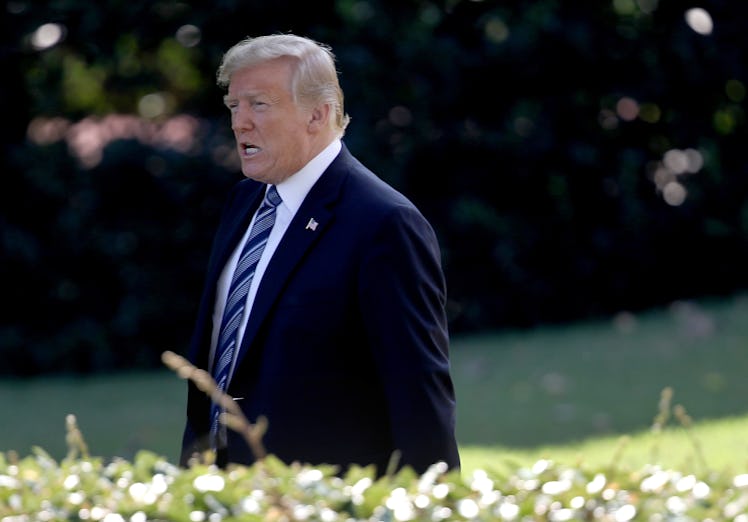
The Process For Using The 25th Amendment Is Complicated
After one of the most horrifying days of Donald Trump’s presidency, debate about the 25th Amendment is once again in the public discourse. Trump supporters stormed the U.S. Capitol on Wednesday, Jan. 6, forcing lawmakers to be evacuated from chambers of Congress or shelter in place in the building. The riot started after a rally at which President Trump instructed his supporters to go to the Capitol in protest of the 2020 election results, which he has baselessly called fraudulent. The White House did not respond to Elite Daily’s request for comment on the situation. However, Trump’s role in inciting the riot has spurred calls to remove him from office under the 25th Amendment. But unlike impeachment, it's not up to Congress whether that constitutional lever gets pulled. So, who can invoke the 25th Amendment, and how does it work?
The 25th Amendment was amended in 1967 after the assassination of President John F. Kennedy, according to NPR, and was designed so that those closest to the president had a protocol in place in the event that he was unable to perform his duties. The process for invoking it is fairly complicated, and intentionally so — only in truly grave situations would it be applied.
In short, only the vice president can invoke the amendment. (So, all eyes are on you, Mike Pence.) But he can't move forward with it alone. According to the full text of Section 4, the VP must do so in conjunction with either a majority of the heads of federal agencies (his cabinet) or a special "body" as designated by Congress.
Once either of those groups (including the VP) decides to invoke it, they send a statement to the Senate pro tempore declaring that they find the president unable to "discharge the powers and duties of his office." This immediately relieves the president of his powers, installing the VP as acting president temporarily.
The president can then counter with a letter of his own, basically refuting his staff's declaration, which restores him to power for four days. If the VP-plus-cabinet body comes back with a second declaration within that time, the VP takes over once more. This second declaration triggers a 48-hour window in which Congress must assemble, and two-thirds of both the House and the Senate must vote in favor of removing the president within 21 days for it to go through.
It's even more tricky because the standard for removing a president this way is "inability," a vague term that could apply to something obvious (like death or disappearance) or something more enigmatic like mental fitness, for which an assessment might be required. As Yale Law Professor Harold Koh told NPR, when President Ronald Reagan was assessed for showing signs of dementia, he was "in good health" that day, so it was a dead end.
But as of January 2021, a documented pattern of the president’s public actions are behind the calls to invoke the 25th. The attack on the Capitol came after months — even years — of the president instructing his supporters to “be wild,” “never concede,” and “stand back and stand by.” As of Jan. 7, several unnamed Republican politicians have joined the calls to remove the president under the 25th Amendment, and some Cabinet members are reportedly holding preliminary hearings on the subject, per CNN.
Chatter about Trump's fitness for office previously came up thanks to a wild op-ed in The New York Times in September 2018. While the piece was published anonymously, the author later revealed himself to be Miles Taylor, then-deputy chief of staff for the Department of Homeland Security. Taylor scathingly described a president who operates erratically, ignorantly, and impulsively. He said many inside the president's own inner circle had not ruled out the 25th Amendment, writing:
Given the instability many witnessed, there were early whispers within the cabinet of invoking the 25th Amendment, which would start a complex process for removing the president. But no one wanted to precipitate a constitutional crisis. So we will do what we can to steer the administration in the right direction until — one way or another — it's over.
Taken together, it's no wonder the composite character of Trump has led many to seriously consider whether the constitutional card might actually get played.
This article was originally published on